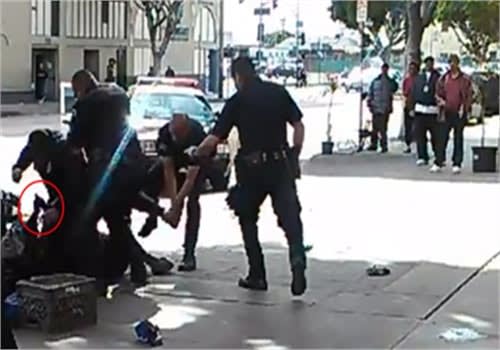“Officer Wrede ran to the driver's side door of the police vehicle and defendant ran to the opposite side of the vehicle, opened the passenger side door and grabbed a shotgun that was secured in a rack. Officer Wrede broadcast, ‘he’s got my shotgun rack,’ and then pushed the defendant and they struggled over the shotgun until defendant ripped the shotgun and the rack from the vehicle. Officer Wrede broadcast, ‘He pulled it out,’ and then pointed his handgun at defendant over the roof of the vehicle. The shotgun was kept in the rack at ‘patrol ready,’ meaning there were four rounds of ammunition in the magazine and the safety was on. To fire the shotgun, the safety must be off and a round must be moved from the magazine to the firing chamber by sliding the pump action. Defendant attempted to load a round into the shotgun by sliding the pump. He pointed the weapon at the victim and appeared to pull the trigger, but the shotgun did not fire. Defendant again tried to load the weapon, which was still in the rack. This time, defendant was able to move the slide and Dunham heard the sound of a load entering the firing chamber of the shotgun. Officer Wrede crouched down behind the vehicle, still pointing his gun at defendant. Defendant then laid the shotgun on the roof of the vehicle and placed his hands on the roof of the vehicle, appearing to give up. Officer Wrede pointed his gun up, above the defendant, and started to walk around the vehicle when defendant picked up the shotgun and shot the officer in the head.”
Did Officer Wrede hesitate to fire because the suspect he made contact with was originally unarmed and after grabbing the shotgun, possessed a weapon that initially wouldn’t fire? Tragically, we don’t know why he hesitated to shoot when he had the opportunity to defend his life, but we know the outcome of his reluctance to fire. As
we wrote about last year
, and according to the FBI, since 2000, at least 57 police officers have been killed by their own weapons, which were taken away and used against them by suspects. So, again, the answer to the unnamed writer in the Times question is simple: if you take or attempt to take an officer's weapon, expect the officer to defend themselves.












